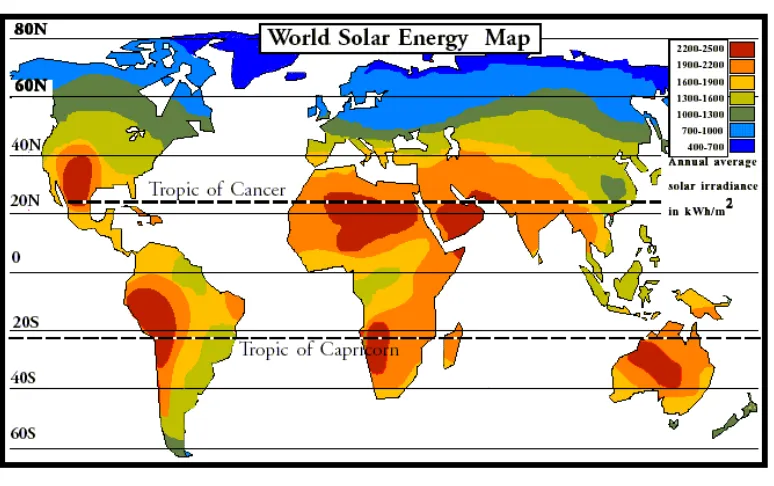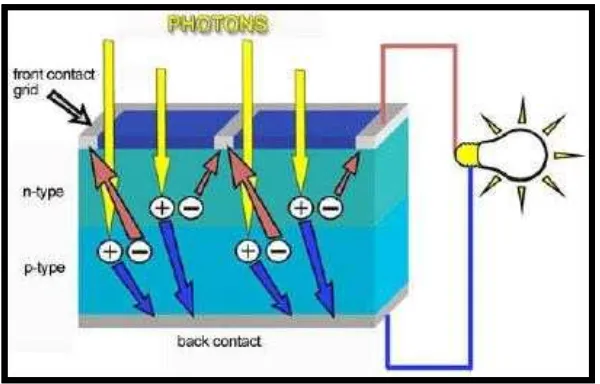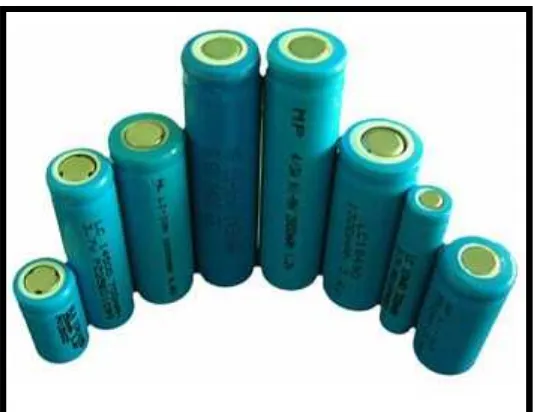UNIVERSITI TEKNIKAL MALAYSIA MELAKA
SOLAR MULTIPURPOSE POWER SUPPLY
This report submitted in accordance with requirement of the Universiti Teknikal Malaysia Melaka (UTeM) for the Bachelor Degree of Engineering Technology
(Industrial Electronics) (Hons.)
by
NUR HADZMI BIN IBRAHIM
B071110199
901008 – 14 – 5043
UNIVERSITI TEKNIKAL MALAYSIA
MELAKA
BORANG PENGESAHAN STATUS LAPORAN PROJEK SARJANA MUDA
TAJUK: SOLAR MULTIPURPOSE POWER SUPPLY
SESI PENGAJIAN: 2014/15 Semester 2
Saya NUR HADZMI BIN IBRAHIM
mengaku membenarkan Laporan PSM ini disimpan di Perpustakaan Universiti Teknikal Malaysia Melaka (UTeM) dengan syarat-syarat kegunaan seperti berikut:
1. Laporan PSM adalah hak milik Universiti Teknikal Malaysia Melaka dan penulis. 2. Perpustakaan Universiti Teknikal Malaysia Melaka dibenarkan membuat salinan
untuk tujuan pengajian sahaja dengan izin penulis.
3. Perpustakaan dibenarkan membuat salinan laporan PSM ini sebagai bahan pertukaran antara institusi pengajian tinggi. atau kepentingan Malaysia sebagaimana yang termaktub dalam AKTA RAHSIA RASMI 1972)
(Mengandungi maklumat TERHAD yang telah ditentukan oleh organisasi/badan di mana penyelidikan dijalankan)
Alamat Tetap:
DECLARATION
I declare that this PSM report entitle “Solar Multipurpose Power Supply” is the result
of my own research except as cited in the references. The thesis has not been accepted for any degree and is not concurrently submitted in candidature of any other degree.
Signature : ……….
Author’s Name : ………
APPROVAL
This report is submitted to Faculty of engineering technology of UTEM as a partial fulfilment of the requirement for the degree of bachelor of engineering technology (Industrial Electronic) with honour. The member of the supervisory committee is as follow:
………
i
ABSTRAK
ii
ABSTRACT
iii
ACKNOWLEDGEMENT
Bachelor Project has been completed successfully with a great contribution of many people in a period of five months. I like to appreciate their guidance, encouragement and willingness since without their support this Bachelor project 1 would not have been a success.
I would like to give my sincere gratitude to Mr. Tg Mohd Faisal Bin Tengku Wook, who is the supervisor of my project for helping me in many ways to make this bachelor project success. He also has been behind me guiding all the project flow from the very first day and giving me very valuable feedbacks, in other words this project cannot be successful without him.
I would also like to thank my incharge panel for presentation, Mr. Mohd
iv
2.3 Rechargeable Batteries 10
2.3.1 Type of Batteries 11
2.3.1.1 Lithium – ion (LiOn) 11
2.3.1.2 Nickel Metal Hydride (NiMH) 12
2.3.1.3 Nickel Cadmium (NiCd) 12
2.4 DC - DC Step Up Converter 13
2.4.1 Type of DC – DC Converter 13
2.4.1.1 Working Principles 14
v
CHAPTER 3: METHODOLOGY 17
3.1 Introduction 17
3.2 Project Methodology 18
3.2.1 Project Implementation of Bachelor Project 1 18
3.2.2 Overall Flow of the Project 20
4.4 Circuit Design and Construction 26
4.4.1 Designing Printed Circuit Board (PCB) 27
4.4.2 Etching Process 28
4.6.1 Analyzing the Charging Operation with Different Input Voltage 33 from Solar Panel to Battery
4.6.2 Analyzing the Charging Operation with Different Source of light 34 Energy
vi
CHAPTER 5: CONCLUSION &FUTURE WORK 37
5.1 Conclusion 37
5.1.1 Cause of the Failure 38
5.2 Limitation 38
5.3 Future Development 39
vii
LIST OF TABLES
4.1 Reminders for Mounting the Component 30
4.2 Analyzing different level of input voltage 33
4.3 Analysis with different source 34
4.4 Fluorescent Light Analysis 35
viii
2.5 Example of solar cell produces electric energy 9
2.6 Rechargeable Batteries 10
2.7 Buck Converter 14
2.8 Boost Converter 14
3.1 Flowchart of Project Implementation 19
3.2 Flow Chart Overall Project 20
3.3 Flowchart of Project 21
4.6 Photoresist Machine 28
4.7 Drilling Machine 29
4.8 Circuit that been solder 30
4.9 Full Hardware 31
ix
LIST OF ABBREVIATIONS, SYMBOLS AND
NOMENCLATURE
AC - Alternate current
DC - Direct current
V - Voltage
A - Ampere
mA - Milliampere
P - Power
IC - Integrated circuit
LiOn - Lithium-ion
NiMH - Nickel-metal hydride
NiCd - Nickel-cadmium
> - More than
1 In the past, cell phone is an accessory that some of the wealthiest but today cell phone is a basic needs of life not just for people who are working but even to among of students. Communication is an important factors to facilitate questions and spreading news or information. The effect of increased cell phone user many companies such as Nokia, Samsung, Motorola and Sony develop new product that affordable by consumers of all ages.
All kind of device require supply such as batteries to generate it’s, however the charge or electron in the batteries will decrease when it been used. When the electron in the batteries are lacking or approaching to zero the batteries need to recharge so that the electron in the batteries will restore and the cell phone will able to function again. Normally, method that been used to recharge utilize by wall plug which is 240V alternating current (AC). This high voltage will step-down to 5V to 8 V depend on the cell phone.
The focus of this project is to build a portable power supply that charge the cell phone and it can be recharge by using wall plug and solar energy. This method can generate electric current by converting the solar energy. Malaysia is located below the equator, so this project is highly recommended. It is because of the very consistent sunlight intensity.
2 Application that using solar energy are growing rapidly, many research state that solar energy is a clean energy and it produce great outcome. Besides that, this solar energy is an alternative energy sources that economical and can be used for long period of time.
1.1 Problem Statement
Cell phone is one of the most best-selling device on the market today, it would be difficult to imagine what life would be like without the cell phone. Well known all cell phone had to recharge the batteries when the electron inside it decreasing or approaching to zero.
Normally the method that been used to recharge the cell phone is wall plug charger, this charger step-down the output voltage from 240V to 5V till 8V and change
the current to DC from AC. These method works effectively but it’s occur some
problem when there have no electricity supply or the cell phone are needed when emergency.
3
1.2 Objective
The main objective of this project is to understand the concept of solar panel
and what the value that can it’s generate and make a portable power supply that can be
recharge by using wall plug and solar energy with better life expectancy.
Other objective of this project is to learn the all type of Direct current (DC) to DC converter and try to apply on this project. So that the output from the solar panel can be simulate to become a desire output.
Last objective is to learn about varies type of battery that suitable for this project. The battery must be small and easy to carry.
1.3 Scope
4 This chapter discuss on the overall project theory and concept. The purpose of this literature review is to explain the components and method that is used in this project. Moreover, this chapter will show the theory and concept used to build this product. This reviews based on journals, books and the internet as reference.
5
2.1 Solar Power
Figure 2.1: Rates of Solar Power
Solar power is the technology of obtaining usable energy from the light of the sun. Solar energy has been used in many technologies for centuries and has come into widespread use where other power supplies are absent, such as in outdoor locations and in space. Solar energy is currently used in a numbers of application. Figure 2.1 shows the rates of solar energy around the world. In equatorial line are the best area to utilize the solar power.
2.1.1 Advantages of Solar Power
Environmentally friendly
Renewable energy source.
It is a clean energy source, no potential damage to the environment.
Cost
Solar energy is free and is available to all.
Because of the improvement in the technology, the solar equipment’s
6 Independency
Solar energy is available to all at fairly equal manner, unlike fossil or fuel sources, which are concentrated at some locations only
This fact provides a chance that an individual can generate his/her own energy depending on the requirement, at his/her place of choice. Solar system therefore can be used in remote areas.
2.2 Solar Panel
Solar panel is an assembly of the solar cells. Solar panel use light energy from the sun to generate electricity through the Photovoltaic effect. Photovoltaic effect is the creation of voltage or electric current in a material upon exposure to light.
7
2.2.1 Solar Cell
Solar cell is the basic building block of solar panel. The solar cell are made up of semiconducting material silicon
Figure 2.3: Solar Cell Structure
(A) Encapsulate - The Encapsulate, made of glass or other clear material such clear plastic, seals the cell from the external environment.
(B) Contact Grid- The contact grid is made of a good conductor, such as a metal, and it serves as a collector of electrons.
(C) The Antireflective Coating (AR Coating) - Through a combination of a favourable refractive index, and thickness, this layer serves to guide light into the solar cell. Without this layer, much of the light would simply bounce off the surface.
(D) N-Type Silicon - N-type silicon is created by doping (contaminating) the Si with compounds that contain one more valence electrons than Si does, such as with either Phosphorus or Arsenic. Since only four electrons are required to bond with the four adjacent silicon atoms, the fifth valence electron is available for conduction.
8 incomplete bond (hole) exists which can attract an electron from a nearby atom. Filling one hole creates another hole in a different Si atom. This movement of holes is available for conduction.
(F) Back Contact - The back contact, made out of a metal, covers the entire back surface of the solar cell and acts as a conductor.
2.2.2 Photoelectric Effect
Photoelectric Effect is emitting of electrons by a matter when hit by photons. The photon's energy transfers to the valence electron of an atom in the n-type Si layer. That energy allows the valence electron to escape its orbit leaving behind a hole. In the n-type silicon layer, the free electrons are called majority carriers whereas the holes are called minority carriers. As the term "carrier" implies, both are able to move throughout the silicon layer of the solar cell, and so are said to be mobile. Inversely, in the p-type silicon layer, electrons are termed minority carriers and holes are termed majority carriers, and of course are also mobile.
The p-n junction:
9 Figure 2.4: Repletion Region
When photons hit the solar cell, freed electrons (-) attempt to unite with holes on the p-type layer. The p-n junction, a one-way road, only allows the electrons to move in one direction. If we provide an external conductive path, electrons will flow through this path to their original (p-type) side to unite with holes.
The electron flow provides the current (I), and the cell's electric field causes a voltage (V). With both current and voltage, we have power (P), which is just the product of the two. Therefore, when an external load (such as an electric bulb) is connected between the front and back contacts, electricity flows in the cell.
10
2.3 Rechargeable Batteries
Figure 2.6: Rechargeable Batteries
A rechargeable battery is a battery that can be recharged and used many times over. It is otherwise known as a storage battery because it is able to accumulate and store energy which then becomes available to the user when he puts the battery to use. A rechargeable battery is sometimes referred to as a secondary cell as well, which is opposed to the non-rechargeable variety which is a primary cell.
When a battery is discharged, it goes through electrochemical changes. In a non-rechargeable battery, these changes are irreversible. A rechargeable battery, however, has the ability to efficiently reverse the chemical changes that occur during discharge when electric energy is applied to it. In this manner, it is restored to full charge and fit for use once again.
11 One of the first applications for rechargeable batteries was the car battery. Today, many electronics use rechargeable batteries, among them cellular phones, laptops, MP3 player, video cameras, and cordless power tools. In fact, many modern products are designed to only use rechargeable batteries.
2.3.1 Type of Batteries
Non-rechargeable batteries, or primary cells, and rechargeable batteries, or secondary cells, produce current exactly the same way: through an electrochemical reaction involving an anode, cathode and electrolyte. In a rechargeable battery, however, the reaction is reversible. When electrical energy from an outside source is applied to a secondary cell, the negative-to-positive electron flow that occurs during discharge is reversed, and the cell's charge is restored. The most common rechargeable batteries on the market today are lithium-ion (LiOn), though nickel-metal hydride (NiMH) and nickel-cadmium (NiCd) batteries were also once very prevalent.
2.3.1.1Lithium-ion (LiOn)
Li-ion batteries are becoming more and more popular. They have a very high energy density allowing them to power the huge range of electronic devices that fill our modern lives. Li-ion batteries also have very good charge retention and can be recharged over a thousand times.




